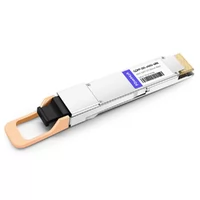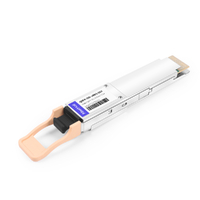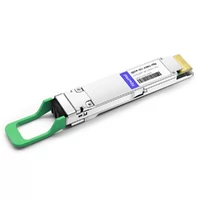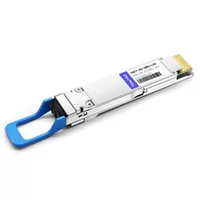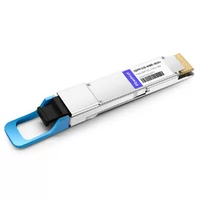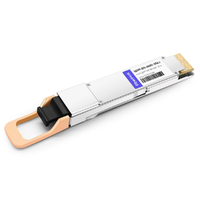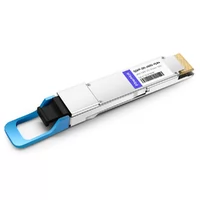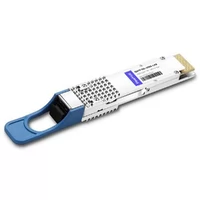In terms of the intricacy of Optical networking, Optical devices such as the Cisco 400G QSFP-DD modules are a remarkable new technological advancement. These modules are a lynchpin of high-speed data communications, allowing enterprises and data centers to cater to the relentless appetite for bandwidth and interconnection. This blog aims to make sense of the convoluted issues surrounding these state-of-the-art devices, including their specifications and performance and their contributions towards the improvement of network infrastructure. The readers will also understand the engineering principles of QSFP-DD modules, how they are implemented across many network architectures and the benefits of scalability, energy consumption, and communication systems in general. The following sections are directed at both the technical aspects and the decision-making processes within the telecommunication sector.
Table of Contents
ToggleWhat is a 400G QSFP-DD Transceiver?
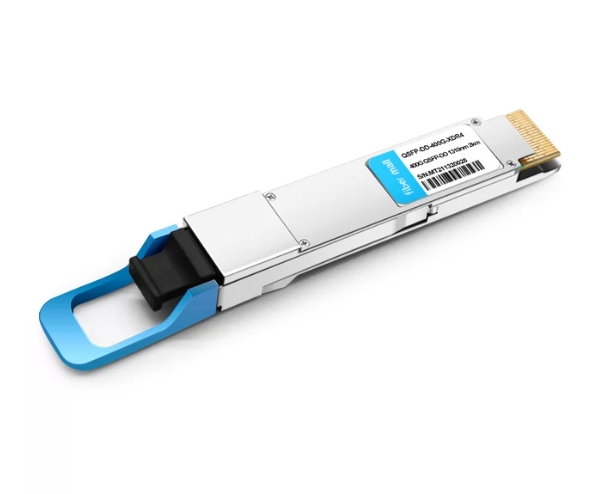
400G QSFP-DD transceiver is a compact, high-density optics interface utilized for network equipment that can transfer data rates of up to 400 GB per second. It employs a double-density connector that provides eight electrical lanes supporting 50G data each, which is twofold the standard qsfp’s capability. The module is meant for dense data center environments where higher performance and minimization of physical space occupied are at a premium. It utilizes better scalability and efficiency, which makes it fundamental in current high-speed network environments.
An Overview of Cisco 400G Technology
Cisco’s 400G technology is a revolutionary step in the domain of the network, aiming at the growing data needs of today’s IT settings. This new technology harnesses the improvement in optical and silicon integration, enabling increased and dependable high-speed data transport across several network architectures. Cisco’s 400G solutions are geared toward improving the throughput, lowering the latency, and increasing energy efficiency, creating a competitive and cost-friendly means to manage complex data traffic.
Through the use of new modulation formats such as PAM4, Cisco’s 400G technology allows an increase in the number of bits carried on the same bandwidth, approximately doubling the data rate while increasing the system’s spectral efficiency. A range of optical reaches and fiber types, including the QSFP-DD models, are incorporated in Cisco’s 400G transceivers to provide inter-operational capability for short-, medium-, and long-haul applications.
7nm silicon technology is also a significant enabler for Cisco’s 400G portfolio due to the marked increase in the performance per watt metric. This is advantageous in a data center scenario where the utilization of power is to be kept low. Cisco’s 400G solutions were designed with the primary aim of being able to fit into the available ecosystem, hence the upgrade or migration would be seamless.
The Cisco 400G ecosystem is described as having intelligent automation capabilities, thereby giving perfect tools to network operators for performance monitoring and predictive maintenance on the network in real time. Such a level of visibility and control is vital for maintaining the network at optimal health and as well guaranteeing that the services are delivered reliably. As a result, Cisco’s 400G technology is not only able to meet the requirements for the connectivity of today but is also well-placed to meet the requirements of the future, enabling more growth in 5G, IoT, Cloud, and many other areas.
How Does QSFP-DD Stand Out from Other Modules?
Equipped with a compact design, the QSFP-DD (Quad Small Form Factor Pluggable Double Density) boasts the highest bandwidth density among its peers as it incorporates an impressive eight electrical interface, with each working at 50 Gbps, aggregating a whopping 400 Gbps bandwidth. Not only does this ensure greater port density, but it also maximizes the use of the switch. Besides, the QSFP-DD modules are also interoperable with the existing QSFP+ and QSFP28 modules, easing flexibility during migration and helping to work with older systems. Therefore, the module features enhanced thermal as well as signal integrity performance, thereby allowing for maximum functional capability in high-bandwidth networks.
The Role of Optical Transceivers in Modern Networks
Optical transceivers are critical in today’s networks as they allow data transfer over fiber lines, which is crucial for applications that require a lot of bandwidth. These devices allow data transmission over considerable distances without any loss of quality of the communication signal by converting electrical signals into optical signals and the other way around. There are some other current core technologies that emphasize a different optical transceiver approach for scalability and flexibility – because the nature of optical transceivers is modular, they are simple to upgrade or replace. Moreover, they are capable of supporting different communication standards and can match several data rates or fiber types to different networking equipment. Technology advancement has been a factor in the increasing use of optical transceivers in data centers, telecommunication, and enterprise networks, as these have led to more secure, dependable, and expandable network solutions.
How Are Cisco 400G QSFP-DD Modules Used in Data Centers?
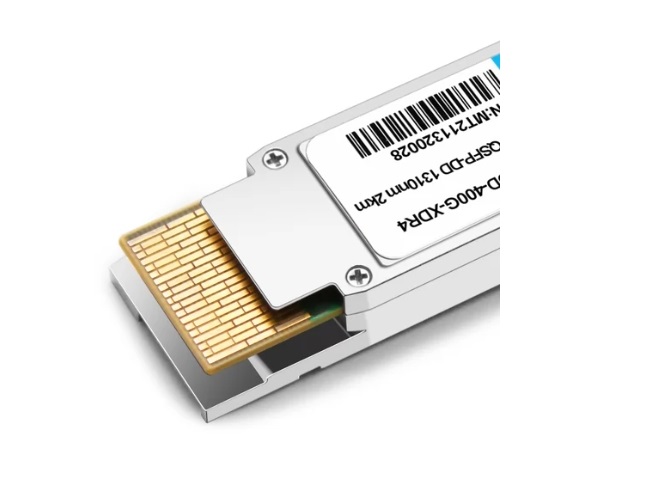
Integration of QSFP-DD Modules in Data Centers
The use of QSFP-DD modules in data centers is an effort to address the increasing bandwidth and data traffic bottlenecks. These modules are capable of supporting 400G Ethernet, which is twice the capacity of the former generation of QSFP28 modules but in a similar form factor which allows data centers to optimize port density.
Details and Data Integration:
- High Port Density: In a 1RU switch configuration, QSFP-DD modules can allow 36 numbers of 400G ports to be per switch. The high density, in this case, allows switches to have a combined bandwidth of 14.4 Tbps, which enables for huge amounts of data to be sent through with the use of less space.
- Backward Compatibility: These modules carry backward compatibility with existing QSFP28 optics which promote interoperability and allow the augmentation of networks over time without a complete overhaul of the data capacity.
- Thermal Performance: With powers constructed at high data rates, which could lead to fluctuations, enhanced thermal performance features allow for better heat displacement, allowing devices to sustain their optimum working temperatures.
- Signal Integrity: With better versions of the transceivers that also have a higher data rate, Enhanced signal integrity features were incorporated, which compensate for loss and other transmission weaknesses, eventually leading to lower BER rates.
- Flexible Deployment Options: The QSFP-DD modules can support various optical transceiver configurations, 4x100G breakout or dual 200G links which widen the range of application.
- Energy Efficiency: Thanks to the low power consumption served by these modules, greener data center operations can be facilitated and consequently, total energy costs are reduced.
The use of QSFP-DD modules is seen as a step into the future and as an investment in a scalable data center infrastructure that is commensurate with current and future networking requirements.
Benefits of Cisco Compatible QSFP-DD Modules
QSFP-DD modules that are compatible with Cisco’s equipment provide for several means for the operations of data centers. For one, there is guaranteed compatibility with the current network infrastructure, hence a data center is able to modernize their systems without making major alterations. Such modules are made to comply with strict industry requirements and thus provide high reliability and performance. They do come with inexpensive variants as well by striking the right performance and cost ratios. They support Cisco’s various networking devices and thus enable integration and management, reducing the operational processes. Thus, the adoption of Cisco-compatible QSFP-DD modules can help improve the scalability, performance, and carbon footprint of the networks.
The Future of High-Speed Data Transmission
When it comes to high-speed data transmission, many processes provide an impressive 4th industrial revolution. One of which is the rollout of Fifth Generation (5G) networks, which have the potential to grow in speed, better response time, and the ability to connect more devices at the same time. A second factor is the ongoing development of fiber optics technology, which is crucial as it enhances data transmission with a better range and efficiency. With these developments, more and more data traffic is accommodated, which is critical for the expansion of broadband use and apps such as video and cloud computing. Thirdly, the application of AI and machine learning algorithms in the network management system improves the predictive functions and enhances service quality and availability. With the evolution of these technologies, they will offer a strong, scalable, and efficient 5G Data transmission architecture that is highly applicable in today’s complex digital environments.
Why Choose Cisco 400G QSFP-DD Optical Transceivers?
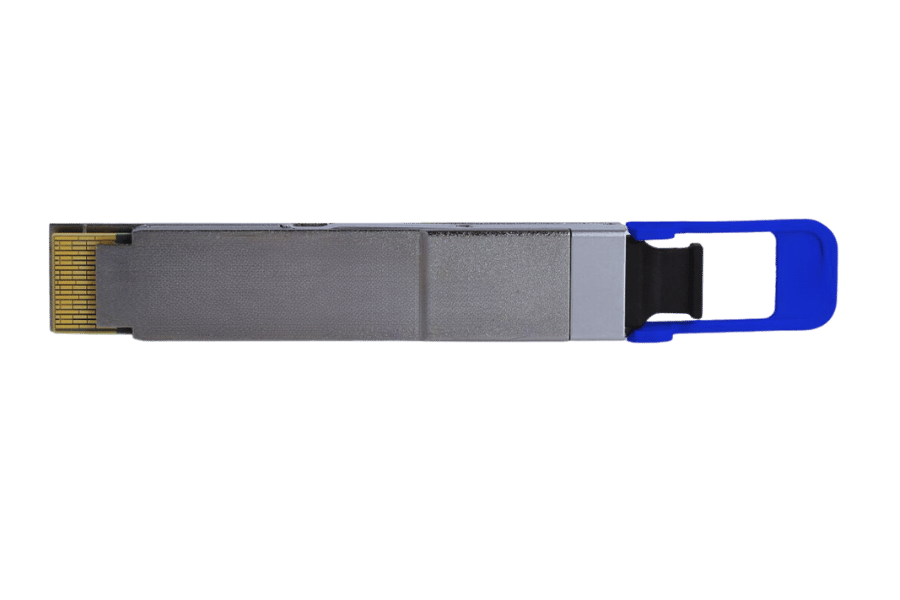
Features of Cisco 400G Transceivers
The advanced design of Cisco’s 400G QSFP-DD optical transceivers meets the requirements of the modern high-speed data transmission network. They are intended for Ethernet, Fibre Channel, and OTN applications, thus ensuring interoperability with various networking environments. Among those requirements, the devices are capable of operating at 400 Gbps PAM4 modulated throughput. This high data rate allows highly demanding applications and wider bandwidth needs to be satisfied. They are also good for distances of up to 10 km over single-mode fiber, making them suitable for deployment in various applications, including data centers and metropolitan area networks.
Cisco’s 400G transceivers come with yet another notable feature, which is efficiency and power consumption, which usually ranges from 12 to 15 watts. This makes them a viable answer for network operators who want to minimize consumption while not sacrificing efficiency. The ability to place multiple connectors on a compact QSFP-DD form factor enables increased port density, which is helpful in expanding the coverage area of the network without the need for additional room. DDM includes monitoring during the operational life of the device, and parameters such as temperature, voltage, and optical power are accessible at all times, thereby improving the chances of effective preventive maintenance of the network. All these features, in combination, render Cisco 400G QSFP-DD optical transceivers as the most suitable selection for high-speed networks in the near future.
Compatibility and Interoperability with Existing Systems
The Cisco 400G QSFP-DD optical transceivers are designed with fitting and functional divisions in mind and are aimed for easy adoption into existing networks. Amongst other requirements, this includes interworking with legacy systems as well as comprehending future requirements. Below discussed are some features that aid in this operational realism:
- Backwards Compatibility: The 400gbps pluggable modules still maintain a lot of 100 and or 200 g n ready capabilities allowing for easy integration while minimizing adverse impacts on the current network.
- Interoperable Vendors: This class of transceivers support a variety of networking equipment vendors enabling heterogenous environments, which increases the operational flexibility.
- Multi-Rate Support: Applications that require a lot of bandwidth, such as 50, 100, or 200gbps, can utilize dedicated devices as well, thereby allowing the transceivers to possess a flexible operational capacity.
- Compliant Standards: These transceivers, by virtue of integration into routers that have ports with subnetting masks, will interconnect into global link states like IEEE 802.3bs, OIF-CEI, which will enable all of them to function seamlessly in virtually every type of infrastructure.
- Seamless Integration: With these transceivers, connecting to the existing network infrastructure is straightforward, eliminating major interruptions in operations throughout the expansion or adjustment of the network.
These characteristics optimally allow Cisco 400G QSFP-DD optical transceivers, enabling companies to increase their network abilities without losing their expenditure in the infrastructure by providing a consistent upgrade solution.
Comparing QSFP-DD with Other Form Factors
The form factor of QSFP-DD (Quad Small Form-factor Pluggable Double Density) is quite different and has improved over its earlier generations, including the QSFP+ and the CFP modules. Some of the differences are stated below:
- Port Density: The use of QSFP-DD transceivers can truly increase the port density which is needed in high-speed data transmission systems especially on network switches where space is a premium. They support 400G throughput thereby providing more robust data center configurations than with the QSPF+ which offers up to 40G and the CFP modules that differ between 100G and 400G in their different versions.
- Power Efficiency: Thanks to advancements in module design, the QSFP-DD is designed to consume less power. This is an important factor in determining operating costs and ensuring data center operations are increasingly sustainable by improving power efficiency without a performance drop.
- Thermal Management: Higher operating data rates in the new form factor of QSFP-DD brings about the problem of increased heat dissipation. To circumvent this, the greater data rates can be operated on the newer form factor with use of advanced thermal management that is part of the standard which also combats the higher thermal dependence that was problematic in previous forms when transitioning to higher network speeds.
- Backward Compatibility: Of the numerous advantages that QSFP-DD has over that of QSFP+ is the fact that they are able be interfaced to switch ports that have been programmed to accommodate the QSPF+ interface type. This backward compatibility feature alleviates the issues that come with organizations seeking to upgrade their network modernization while at the same time making use of previously existing investments in QSFP modules.
- Data Rate Flexibility: The QSFP-DD form factor not only provides a clear evolution of older form factors but also supports an increased number of data rates and protocols. It brings about versatility on the network across various band width specifications ranging from multitude of 50G lanes to configurations of up to 400G thereby suit networking needs that are current as well as future.
- Cost-Effectiveness: QSFP-DD is a good compromise as far as cost savings are concerned to the issues of scaling of a data center since it would combine higher performance increases and allow for better integration. They possess better performance than optics of older form factors but at the same or even lower total cost of ownership.
From the logistics analysis, what can be noted is that the QSFP-DD form factor is apparently built up targeting the aggressive requirements of modern network environments while being equipped with sufficient headroom for future enhancements that drive the point.
What Makes the QSFP-DD Optical Module Advantageous?
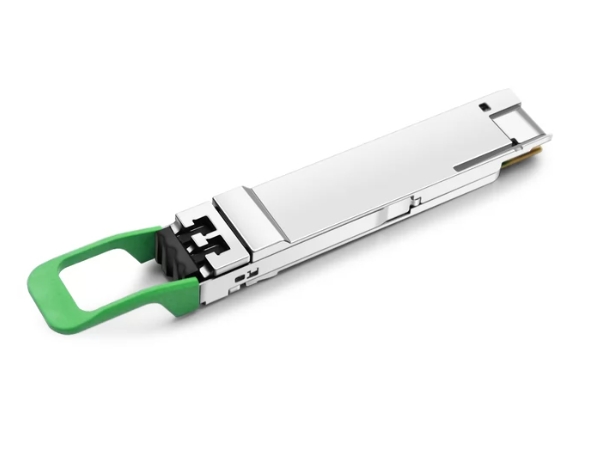
Key Specifications of QSFP-DD MSA
The evolving MPLS network and sophisticated cloud computing hardware have increased bandwidth demand. The requirements for 400Gb/s transmission can be met with the help of the QSFP-DD (Quad Small Form Factor Pluggable Double Density) MSA. Its characteristics are amplified to achieve the intended goal while ensuring efficient implementation. These are the Specifications of the QSFP-DD MSA:
- Data Rate: The range of its application is likely to be higher than 400Gbps and will encompass a range of multi-lane data rates such as 200 and 100 and even below for deployment flexibility.
- Electrical Interface: An 8-lane electrical interface is used in the device, this is an improvement from the standard 4-lane interface found in the QSFP standard form factors.
- Optical Interface: There is support for several standards concerning the optical interface based on single-mode and multimode fibers that increases compatibility between different parts of networks.
- Power Consumption: One of the biggest advantages of the device is the control of energy; it has 15W as a power upper limit, which is efficient energy usage.
- Backward Compatibility: Especially with appropriate adapters that combine capabilities with other devices’ capabilities of the same or similar classes, it can aid in the transition phase owing to the vast possibilities QSPF+ ports offer.
- Thermal Management: Withstand high power and data loads that would influence multidimensional applications, enabling and increasing the number of interfaces.
- Form Factor Dimensions: Adaptable to data center racks allowing for units supporting the form factor to be densely populated while maintaining the standard size.
- Connector Type: Ensures that double-density connector is in place to cover contact densities and right performance when engaged under loading usage conditions.
All of these features combined allow to define the QSFP-DD as a connector which is adaptable and has a good performance scaling to the needs of modern data centers and network technologies requirements.
Understanding QSFP-DD Port Capabilities
Quad Small Form Factor Pluggable Double Density (QSFP-DD) ports are meant to enhance High-speed data transmission using an 8-lane electrical interface, which makes the system ‘twice as effective’ as a 4-lane system. These ports are able to satisfy a wide range of optical interface standards, which provides flexibility in the use of both multimode and single-mode fiber deployment. The QSFP-DD ports are designed for better performance and power consumption, having operational power of up to 15W and applying high-end thermal engineering management for better performance in high-temperature/pressure environments. The ports also allow usage of QSFP+ compliant adapters, making them able to function with older cables and infrastructures, ensuring low cost of use or restructuring and a vast array of connectivity possibilities while ensuring high density and small size. In the end, QSFP-DD ports prove to be a cost-effective and versatile way of dealing with modern-day demands for data and networking, which are increasing continuously.
Scalability and Flexibility with QSFP-DD Optical Solutions
The unique characteristics of the QSFP-DD provide an important benefit: their remarkable scalability and elasticity, which are a must in the scenario of contemporary data center infrastructures. The use of the QSFP-DD format enables network architects to augment the port density and, subsequently, the data transfer capabilities in space-constrained settings. This feature of the QSFP-DD optics enhances the capability to upgrade and expand the bandwidth with minimal changes to the present infrastructure. Besides that, the fact that QSFP-DD is backward compatible makes it easier to use with the existing QSFP+ and helps to provide a cheaper route for switching. Maximum data rates of more than 400Gbps can be handled by the high-speed optical modules, providing a basis that can cater to the increasing use of data-centric applications and services. Such expansion eases the agility of data centers to adapt to new technological changes and even address future changes.
Are Cisco Compatible QSFP-DD Transceivers the Best Choice?
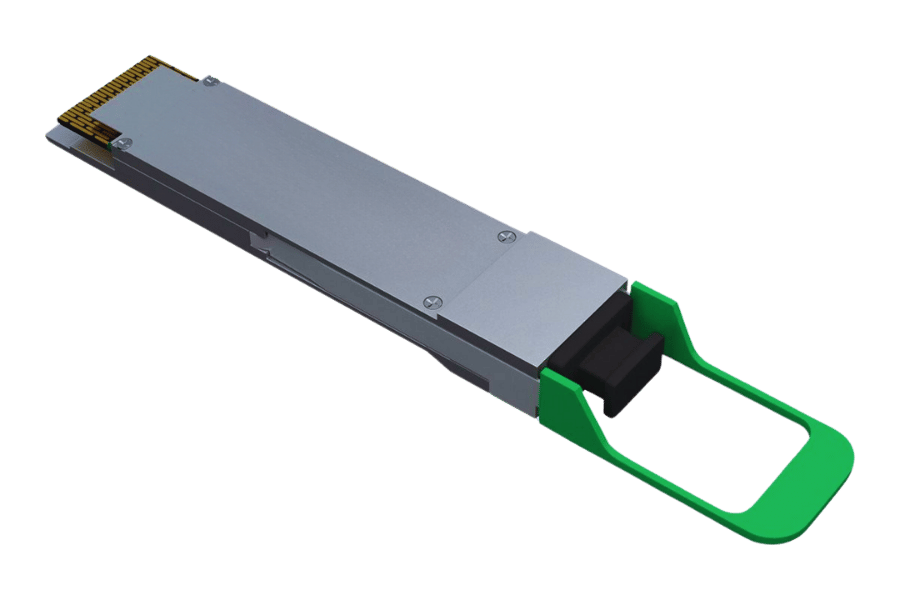
Evaluating Compatible 400G QSFP-DD Options
The compatible 400G cloud QSFP-DD transceiver will have to consider several factors. The aspect that touches the most is compatibility with the already implemented network, as this ensures interoperability without too many changes. However, it is also worth addressing performance parameters, e.g., bandwidth support required, latency, and signal requirements a data center has. There is also a requirement for maximization of cost, which is the optimization of the acquisition cost and the maintenance cost in the long term. Also, it is necessary to evaluate the warranty and support to be able to continuously rely on and get technical aid in the future. Collectively, these aspects help determine whether Cisco-compatible QSFP-DD transceivers are the most appropriate choice for a particular application out there.
Comparative Analysis with Non-Compatible Transceivers
Comparing the Cisco-compatible QSFP-DD transceiver and non-cisco-compatible QSFP-DD denier et cbor’s with respect to some Techno Functional parameters would be a good way to start. First, it must be pointed out that Cisco-compatible transceivers are interoperable with existing Cisco infrastructure, which is never an issue. Non-compatible transceivers would need some configuring or using an adapter, which could cause some signal degradation and cost latency.
Performance is another vital one, as in sticking to the expectation compatible ones do what their intended purpose – least packet loss due to effective CODING SCHEME pegging to the raster. Benchmarking data suggests that compatible transceivers achieve as high as 10% efficiency increase when placed under specific workloads when compared to non compatible counterparts, the latter is prone to increases in jitter and signal distortion with such allocations.
It can be validated through a cost analysis that cisco compatible transceivers may come across as expensive to purchase considering all the parameters and requirements, however they will loss costly and that will turn out to be inexpensive run cost as per the timeline. In fact, the cost savings in operational expenditures and the reliability boosted with enhanced manufacturer support would offset the investment.
Competitively transceivers are backed up by manufacturers offering incentives in warranty and thus are well supported by technical support, compatible transceptors have such provided assistance. Long-term productivity and, thus, operation would be smooth and stable, considering the absence of such variants.
In broad terms, these indicators – the functions of aberrance, performance efficiency, total cost of ownership, and the after-sales support of the manufacturer – all together vindicate the choice of deploying Cisco-compatible QSFP-DD transceivers in optimizing operations of the data center.
User Feedback and Industry Performance Standards
Customer reviews regarding Cisco-compatible QSFP-DD transceivers usually emphasize their operational and reliability performance. Users frequently mention improved system resilience and limited interference as a result of these transceivers effectively working with their hardware network resources. Customer feedback further mentions appreciation of the level of the manufacturer’s operational support and the assurance of quality provided, thus increasing confidence in these units.
When looking at industry performance benchmarks, the best-ranked QSFP-DD transceivers also underlie the same parameters for inter-switching and data accuracy. They comply with the requirements defined by standards bodies like the IEEE and the MSA for the optical and electrical performance. Such compliance provides assurance of device interoperability and optimized performance in different network settings and thus shows high performance once deployed in enterprise class data cenres.
Reference Sources
Frequently Asked Questions (FAQs)
Q: What exactly is meant by the term Cisco QSFP-DD Transceivers?
A: Cisco QSFP-DD transceivers are high-capacity optical modules that enable 400G data transmission in a breakable QSFP-DD form factor. They are aimed to provide the functionality required by modern data centers and other data and network equipment users who demand efficient data transmission in terms of cost and reliability.
Q: Which Cisco manufactures specific 400G Transceiver Modules?
A: Cisco has a number of 400G transceiver modules such as the 400G QSFP-DD-SR8, 400G QSFP-DD FR4 Transceiver, and 400G Digital Coherent QSFP-DD transceivers which are made for different needs of networks and environments in which they are used.
Q: What network operational efficiency optimizations can be achieved with the use of these Cisco transceivers 400G QSFP-DD?
A: Cisco’s 400G QSFP-DD optical transceivers, including the 400G Qube Support optical transceiver domed cone reflector insert, help reduce operation efficiency internal interconnect length.
Q: Are the transceivers Cisco 400G QSFP DD compatible with other consoles or interfaces?
A: Yes, it is; since the modules were designed to be put into current network infrastructures, the Cisco 400G QSFP-DD transceiver is a programmed interface for both QSFP and QSFP28.
Q: What are the typical applications of the 400G QSFP-DD FR4 transceiver?
A: 400G QSFP-DD FR4 transceiver is employed for single mode fiber long haul, it is a useful method for interconnecting datacenters built in distant regions of the country or the world.
Q: What are the advantages of the 400G QSFP-DD DR4 transceiver?
A: The 400G QSFP-DD DR4 optical transceiver is ideal for data centers’ applications as it ensures quality and dependable data traffic which distance goes up to 500 meters across multi-core single mode fibers that allows for inter-data center links.
Q: Where do I find the HP’s 400G QSFP-DD transceivers technical description?
A: Technical details for Cisco’s 400G QSFP-DD transceivers can be found in the data sheet provided by Cisco which states the specifications, compatibility, and additional features for each of the modules.
Q: Why do you consider QSFP-DD optical transceivers to be a prerequisite for 400G networks?
A: QSFP-DD optical transceivers are indispensable devices in the 400G networks as they have the required bandwidth and transmit signal strength that can take care of the soaring data requirements without compromising on energy utilization and reliability of the chain.
Q: In what form do 400G QSFP-DD optical transceivers provide performance?
A: 400G QSFP-DD optical transceivers are capable of delivering performance by means of these transceivers’ mass transmission of massive data packages with high frequency and reliability, making them suitable for future use in various network applications.
Related Products:
-
 Cisco QDD-400G-SR8-S Compatible 400G QSFP-DD SR8 PAM4 850nm 100m OM4 MPO-16 DDM MMF Optical Transceiver Module
$149.00
Cisco QDD-400G-SR8-S Compatible 400G QSFP-DD SR8 PAM4 850nm 100m OM4 MPO-16 DDM MMF Optical Transceiver Module
$149.00
-
 Cisco QDD-400G-SR4-S Compatible QSFP-DD 400G SR4 PAM4 850nm 100m MTP/MPO-12 OM4 FEC Optical Transceiver Module
$450.00
Cisco QDD-400G-SR4-S Compatible QSFP-DD 400G SR4 PAM4 850nm 100m MTP/MPO-12 OM4 FEC Optical Transceiver Module
$450.00
-
 Cisco QDD-400G-FR4-S Compatible 400G QSFP-DD FR4 PAM4 CWDM4 2km LC SMF FEC Optical Transceiver Module
$500.00
Cisco QDD-400G-FR4-S Compatible 400G QSFP-DD FR4 PAM4 CWDM4 2km LC SMF FEC Optical Transceiver Module
$500.00
-
 Cisco QDD-400G-LR4-S Compatible 400G QSFP-DD LR4 PAM4 CWDM4 10km LC SMF FEC Optical Transceiver Module
$600.00
Cisco QDD-400G-LR4-S Compatible 400G QSFP-DD LR4 PAM4 CWDM4 10km LC SMF FEC Optical Transceiver Module
$600.00
-
 Cisco QDD-4X100G-FR-S Compatible 400G QSFP-DD XDR4 PAM4 1310nm 2km MTP/MPO-12 SMF FEC Optical Transceiver Module
$580.00
Cisco QDD-4X100G-FR-S Compatible 400G QSFP-DD XDR4 PAM4 1310nm 2km MTP/MPO-12 SMF FEC Optical Transceiver Module
$580.00
-
 Cisco QDD-400G-SR4.2-BD Compatible 400G QSFP-DD SR4 BiDi PAM4 850nm/910nm 100m/150m OM4/OM5 MMF MPO-12 FEC Optical Transceiver Module
$900.00
Cisco QDD-400G-SR4.2-BD Compatible 400G QSFP-DD SR4 BiDi PAM4 850nm/910nm 100m/150m OM4/OM5 MMF MPO-12 FEC Optical Transceiver Module
$900.00
-
 Cisco QDD-4X100G-LR-S Compatible 400G QSFP-DD PLR4 PAM4 1310nm 10km MTP/MPO-12 SMF FEC Optical Transceiver Module
$1000.00
Cisco QDD-4X100G-LR-S Compatible 400G QSFP-DD PLR4 PAM4 1310nm 10km MTP/MPO-12 SMF FEC Optical Transceiver Module
$1000.00
-
 Cisco QDD-400G-LR8-S Compatible 400G QSFP-DD LR8 PAM4 LWDM8 10km LC SMF FEC Optical Transceiver Module
$2500.00
Cisco QDD-400G-LR8-S Compatible 400G QSFP-DD LR8 PAM4 LWDM8 10km LC SMF FEC Optical Transceiver Module
$2500.00

